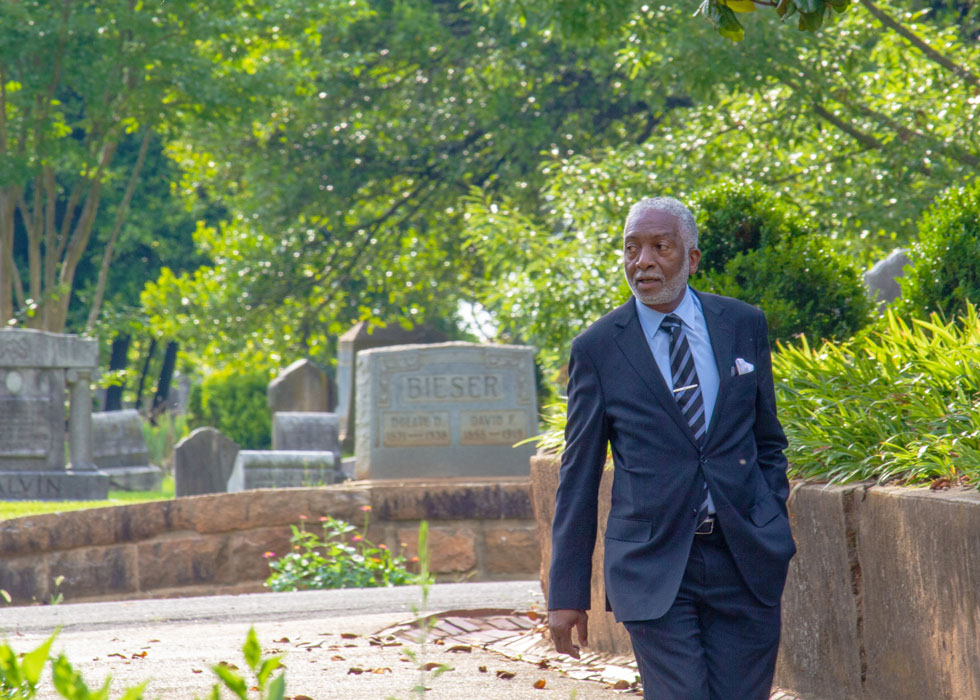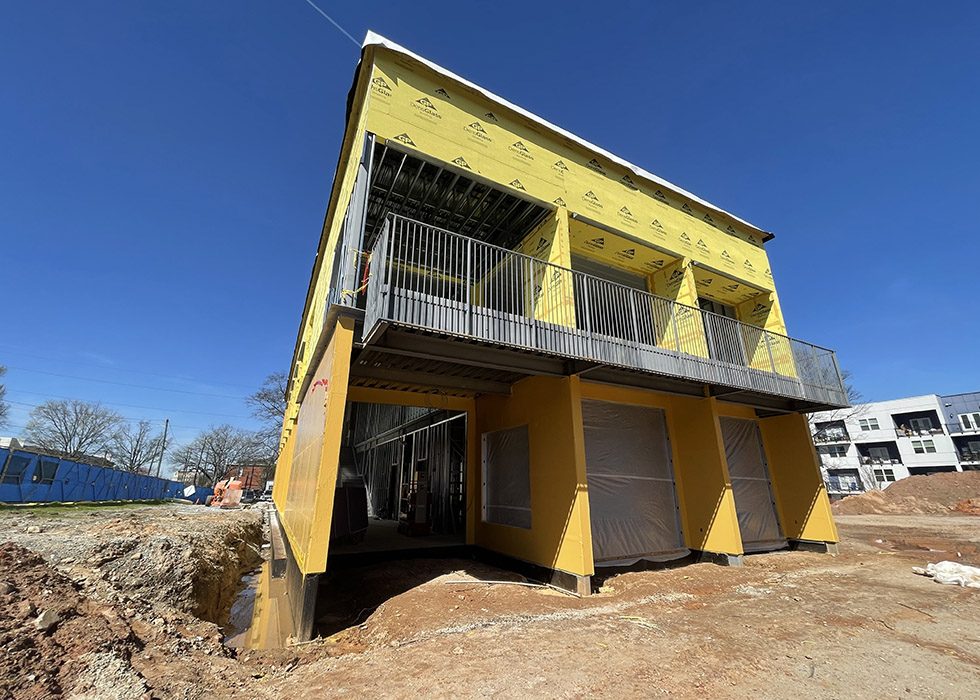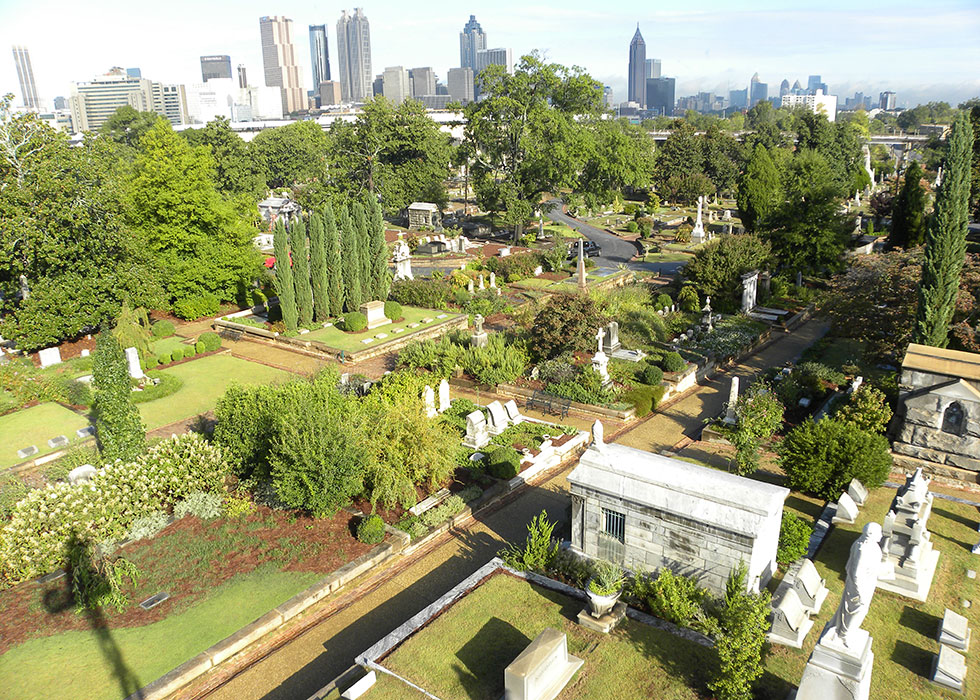
An Interview with Oakland Cemetery Sexton Sam Reed
Historic Oakland Foundation programming intern Taylor Roberts recently interviewed Oakland Cemetery Sexton Sam Reed, whose friendly visage visitors might see outside his Bell Tower Building office or traversing the historic 48 acres that are his to look after. For more than two decades Sam has been one of the Foundation’s greatest cheerleaders, and we’re so glad we get to work with him. In this interview, Sam talks about what drew him to his profession from an early age and about what it’s like to care for a historic cemetery like Oakland.
What’s your background? How did you become a cemetery sexton?
I’m originally from a coal mining camp in West Virginia. In the first grade, my teachers asked me what I wanted to be when I grew up, and my immediate answer was, “an undertaker.” Everyone started laughing, of course, but I’ve always known and felt comfortable with what I’ve wanted to be. At the time, I even understood a little of what they call mortuary science now. I knew that despite the circumstances of someone’s death—maybe they would be sick and lose a lot of weight, or there was a car wreck—they would still look at peace and “fixed up” at the funeral. I was amazed at the transformation and wanted to know more about what went on behind the scenes when preparing a body, so I began hanging around the funeral homes. There, I was never afraid of the dead bodies. I would touch their hands, or shirts, or even their face, and I knew I was close to my calling. I moved to Atlanta in 1986 to go to mortuary school.
I came to Oakland in 1998 and have been the cemetery sexton for over 23 years. As sexton, I am the caretaker of the cemetery and work in the City of Atlanta Department of Parks and Recreation. I maintain the burial records, manage maintenance staff, and direct vendors.
How are active burials conducted at Oakland? How does someone get to be buried at Oakland?
Most current burials at Oakland are descendants of original plot owners. When processing a burial, I look up whether or not existing spaces are reserved for that individual and confirm their relation using birth, death, and marriage certificates. Each lot has an abstract, which is a form that shows the present owner, the original owner, and when the lot was purchased. The abstract can help corroborate someone’s relation by verifying the date of birth, death, or internment of buried relatives.
Those who don’t have a relative buried at Oakland and would like to have Oakland as their final resting place are placed on a waiting list for burial lots. When families move to different states or are simply looking to sell their lot, I work to pair open spaces with potential residents.
I enjoy speaking to families during the burial process because I get to talk to them about Oakland. I get to share with them the significance and history of this site, and I often make relatives want to be buried at Oakland too. Many of these conversations provide grieving families with closure because they get to think of their relative as the newest addition to Atlanta’s long, diverse legacy.
What’s the most interesting burial you’ve ever witnessed? What made it remarkable?
I conducted the burial for Maynard Jackson, Atlanta’s first Black mayor. Jackson’s memorial is unique for many reasons, the materials used to create his monument and the way he faces downtown to see City Hall, among many other things, but it’s most significant because he desegrated his burial lot. Seeing his monument develop to represent different aspects of his work in Atlanta and watching people come and visit him every day reassures me that his contributions won’t be forgotten and that he’s still on people’s minds.
How do you regard death? Do you think your role has given you new proximity to the cycle of life?
I’m not afraid to die, and I do think I have a different outlook on death than most people. In addition to working at Oakland, I also work at a funeral home in the evenings. There, I get to see the whole picture, from someone’s death to their interment. I believe that the dead are at peace and that we give them and their families peace through our services.
When someone dies, the funeral service goes to pick them up from the hospital or the home, and we assess the condition of the body at the funeral home. After embalming the body, we dress them and perform cosmetic changes to prepare them for the funeral.
Before the funeral, family members usually see their loved one in the hospital, and they imagine that that’s what they’ll see at the funeral home, but families often react with amazement at how great and different their relative looks. We create a memory picture that family members can appreciate, and it often makes it easier for them to say goodbye.
Working at Oakland allows me to talk more deeply with the families about their loved ones. Many just want you to listen to them speak on their relative’s lives, and I always do. I try to lift their spirits and make sure that people leave the cemetery differently after they speak with me.
Do you have any ghost stories?
I don’t technically have a ghost story, but I have had some spooky encounters in the Visitors Center. The Visitors Center was built in 1899 and was originally the residence of the sexton’s family on the upper level and a chapel on the main floor. Many times, I’ve been in the building by myself, and I could hear footsteps upstairs. I’ve checked to see if anyone is there, checking every room and every corner, but there’s never anyone there. I’ve heard these footsteps for years, but it’s never really bothered me. I just say, “oh well, I guess there are two sextons in the building.”



